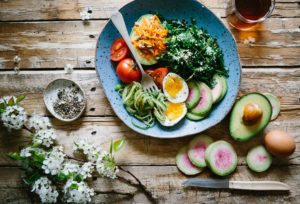‘Tis the Season for Local Food & Wine!
By Stephanie Oelsligle Jordan, Local Food Program Manager
Need a last-minute special gift for someone? Give the gift of local food and wine! Many of Solano’s farmers and winemakers are offering wonderful packages, gift cards and special deals this holiday season. Buying from a local farm or winery both strengthens our local food system and provides unique gifts for those you love (a win-win!). Here’s a list of available goodies from some of our favorite places, to make your gift-giving easier this year (and who doesn’t need a helping hand in 2020?!)
Farms
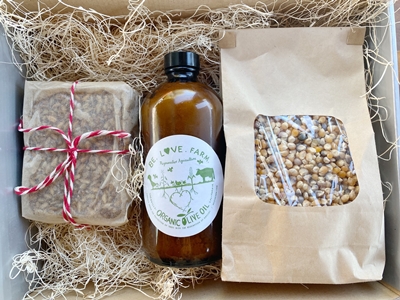
Be Love Farm is offering beautifully packaged gift boxes that can be shipped anywhere. There are five different boxes to choose from, with various combinations of farm goods (“Box B” has their house-made Sunbars, a pint of Be Love Farm extra virgin olive oil and 1 lb. of multi-colored popcorn). All farm goods are packed in a silver gift box filled with excelsior softwood carvings and finished with a twisted paper bow.
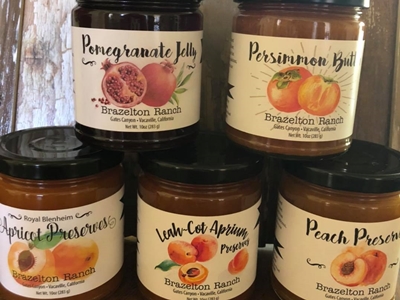
Brazelton Ranch, a favorite stop for stone fruit, is open on the weekends, selling Satsuma Mandarins and a variety of preserves crafted from summer apricots, peaches, “leah-cot apriums” as well as pomegranate jelly and persimmon butter. Watch for updates on their Facebook page!
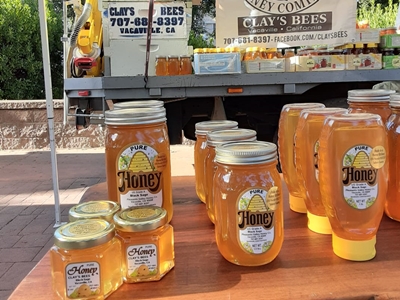
Clay’s Bees (aka Pleasants Valley Honey Co.) has tasty, local honey for sale at Journey Coffee Company (3 locations around Fairfield/Vacaville), or you may visit their Facebook page and private message them. It’s some of the best honey in the county – don’t miss out!
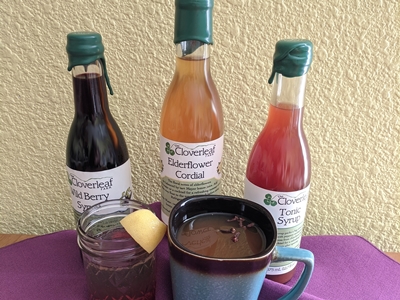
Cloverleaf Farm has preserved their summer bounty of stone fruit for you to enjoy year-round! Their Beverage Box includes a trio of handcrafted syrups to liven up your drinks, whether they are hot, cold, alcoholic, or non. The Burger Bundle pairs Peach Ketchup with Chow Chow Pickle relish for a no-fuss casual burger night at home. And of course there’s jam! If you can’t decide, pick the Jam Trio and the Cloverleaf crew will hand pick for you. More options like dried nectarines are also in their website store.
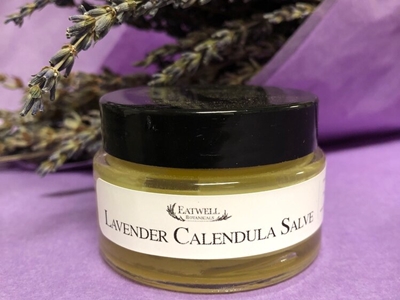
Eatwell Farm has what you need for both the culinarian and lavender lover in your life! Well-known around Solano County for their CSA program featuring organic produce, Eatwell offers seasoned salts (smoked chili salt? Yes, please!) and an array of lavender products, including essential oils, salves, sachets, sugar scrubs, hand sanitizer and more. Visit their Mail Order page for details.
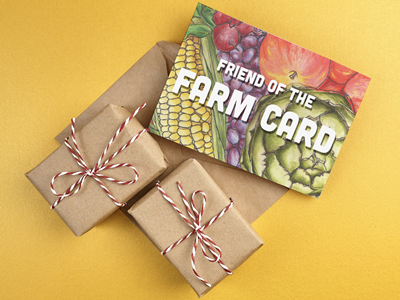
Lockewood Acres, a diversified organic farm near Vacaville, offers gift cards, CSA subscriptions and unique prepared items such as pomegranate shrub and elderberry syrup (great in drinks, and immune-boosting!) There are also jellies, jams, dried herbs and more on their online market page. Look for Lockewood Acres products at Sweet Peas Boutique in Vacaville, too!
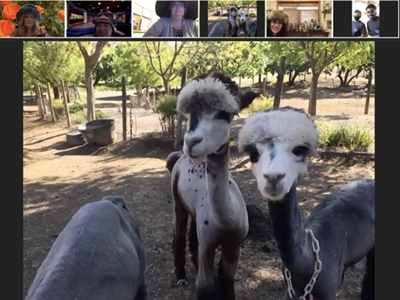
Menagerie Hill Ranch has very unique gift opportunities showcasing both alpaca fiber products (yarn, roving, socks, tote bags, Covid masks) and now the alpacas themselves! You may schedule a virtual alpaca visit where these friendly animals join a Zoom meeting! Details and more products are on their web store page.
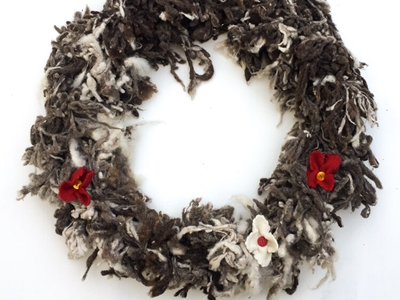
Meridian Jacobs is a ranch featuring wool, yarn and fiber grown by Solano County Jacob sheep. Their website has DIY kits for wild wool wreath-making, Jacob horn buttons, weaving and knitting supplies and beautiful “Solano Garden ecoprinted” scarves that utilize flowers and leaves from the farm to bring color and design to the fabric. They are open Saturday, Dec. 19, by appointment – call or email!

Morningsun Herb Farm has a plethora of garden décor, candles, jewelry, and of course seeds and plants for the gardener in your life. Their collaboration with Soul Food Farm (see below) provides an array of lavender products in their Hierbas y Flores line – from soap and sugar scrub to culinary lavender and jams (strawberry lavender jam! Yum!) Virtual gift cards may also be purchased on their website.

Soul Food Farm in Pleasants Valley has wonderful estate olive oil, dried olive leaves, yarn and of course lavender products from the Hierbas y Flores line, including essential oil and hydrosol. Their extra virgin olive oil is available for purchase at the farm or for shipping out. Visit their website for details!
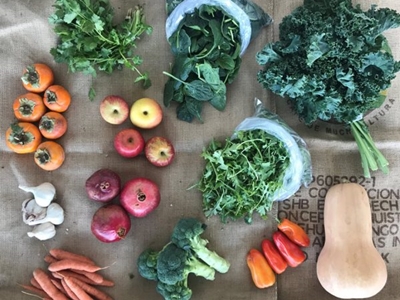
Terra Firma Farm is offering gift certificates for any size of their Community Supported Agriculture (CSA) boxes (small, medium and large) – a great way to introduce someone to a CSA! Current CSA subscribers can purchase directly from their website. Others may email the farm directly (csa@terrafirmafarm.com) or call 530-795-2473 to make payment and gift-giving arrangements.
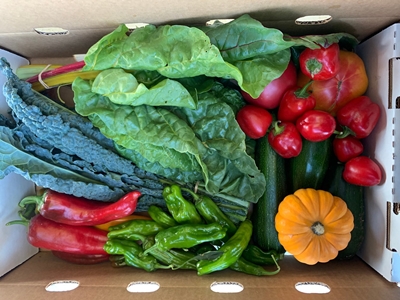
Wilkinson Acres, an organic farm in Suisun Valley, is launching their new CSA program and offering a holiday CSA raffle (great for you Fairfield folks)! Once you subscribe to the CSA, you may enter the raffle to receive 50% off your summer 2021 CSA membership as well as a full spring 2021 CSA membership to gift to another family. Gift cards may also be purchased from their web store. Wilkinson’s farm stand – open every Saturday, and now Wednesday afternoons (December only) – often features guest businesses with everything from candles to cookies to salsa.
Wineries
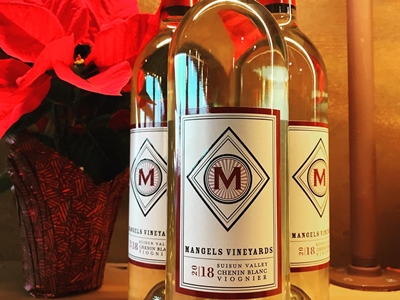
At Mangels Vineyards, the Mangels family continues the tradition of winemaking in the Suisun Valley started by their great-grandfather over 100 years ago. Winemaker Gina Richmond crafts a diverse lineup of wines from Sauvignon Blanc to Syrah, and just released their new Chenin Blanc-Viognier. Stop by Friday-Sunday, 12-5 pm to taste and purchase their variety of wines!
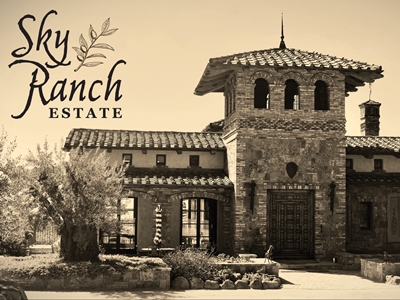
Sky Ranch Estate was devastated by the August fires, but their inventory (stored off-site) survived! Don’t miss out on their award-winning 2017 Sky Ranch Il Cocuzzolo, a Bordeaux-style blend; two vintages of Syrah; and extra-virgin olive oil. Many wines are selling out — visit their web store for details and shipping info.
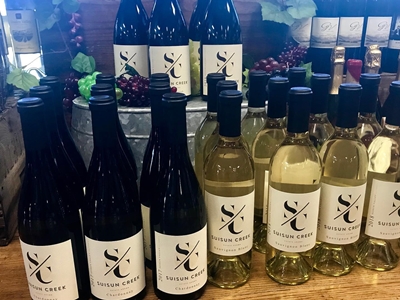
Suisun Creek Winery, operated by Brian and Katie Babcock, is open Saturdays and Sundays from 12-5 pm for wine tasting and sales. Their handcrafted estate wines include Verdelho, Sauvignon Blanc, Chardonnay, Zinfandel, and Petite Sirah — many options for putting together your own gift combo (or keeping some for yourself!) Visit their website for wine club details and more info.
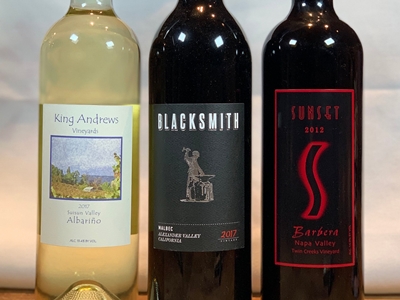
Suisun Valley Wine Co-op represents three micro-wineries and offers small-batch wines handmade here in Solano County. Their popular wine gift set — the #SolanoStrong Fire Relief Pack — features a bottle from each producer and supports local farmers and ranchers affected by the devastating 2020 fires. All Holiday Gift Sets includes wine-infused fleur de sel salt too! In addition to the online store, the Co-op will be open every day for tasting, sales, and curbside pickup between Dec. 18 and Jan. 3 (except Dec. 25 and Jan. 1).
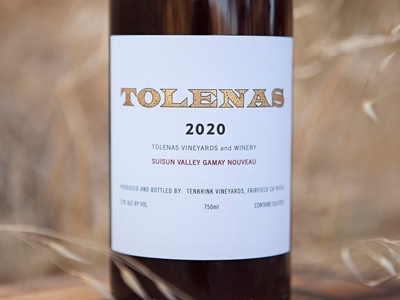
Tolenas Winery is offering complimentary shipping (to all allowable states) with an order of six or more bottles, and complimentary delivery within Solano County on all orders of $50 or more! Check out their holiday special release of 2020 Gamay Nouveau and the 2020 Lot 38 Port Nouveau, featured by Fortune.com magazine for top Thanksgiving wines. There’s a limited supply, so visit their web store fast!
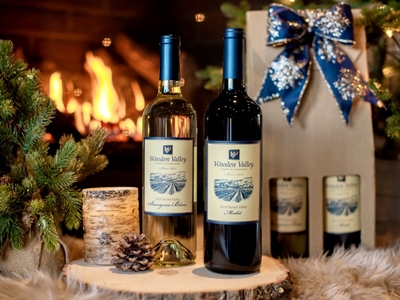
Wooden Valley Winery is offering $5 flat-rate shipping on purchases of four or more bottles anywhere in California and a variety of two-bottle holiday packages in a gift box, complete with a bow and an ornament. From sparkling to Italian-style and even a dessert wine package, Wooden Valley Winery has you covered!
Fire Relief Fund: Give the Gift of Hope!

Several farms were destroyed or damaged in the August 2020 fires that swept through Solano County, including Girl on the Hill, Samuels Ranch Sustainable, La Borgata and others. Sustainable Solano continues to gather donations that will support specific projects for these farmers, ranchers and growers in Pleasants Valley who were affected by the fires. Visit Sustainable Solano’s website for details, and please earmark the tax-deductible donation for “fire relief.” If you wish to donate directly to a specific farm, please visit Pleasants Valley Agriculture Association’s website for a complete list and preferred donation methods.
A note on open hours and COVID-19: The listed days and times were correct at the time this blog was written, but we know that there is a chance state and county orders could quickly change how these businesses operate. Please check with any farm or winery before visiting.

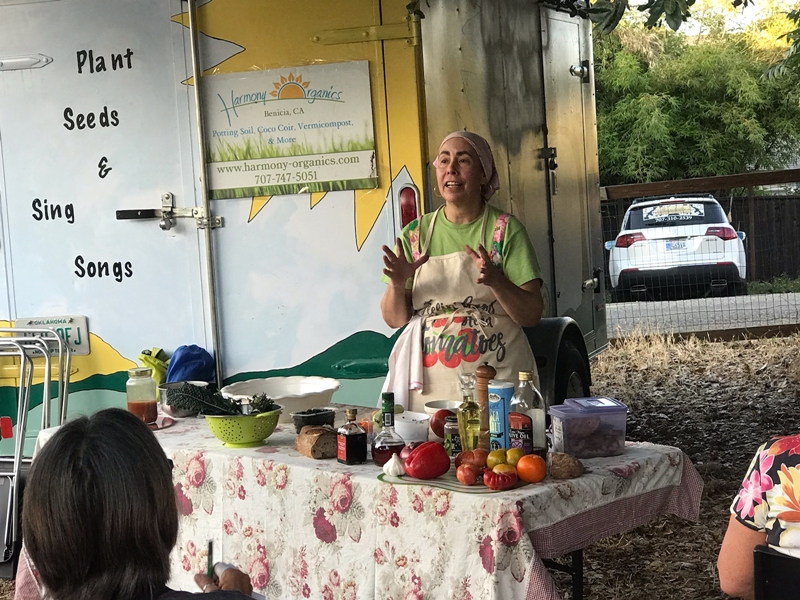
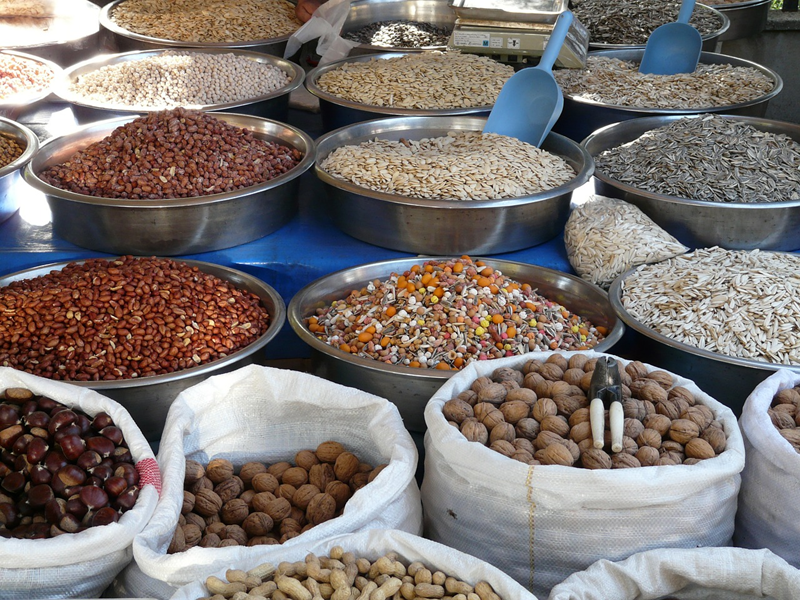
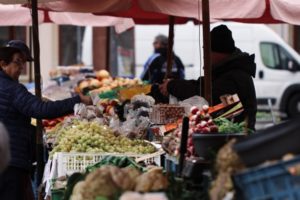
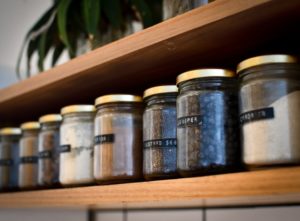
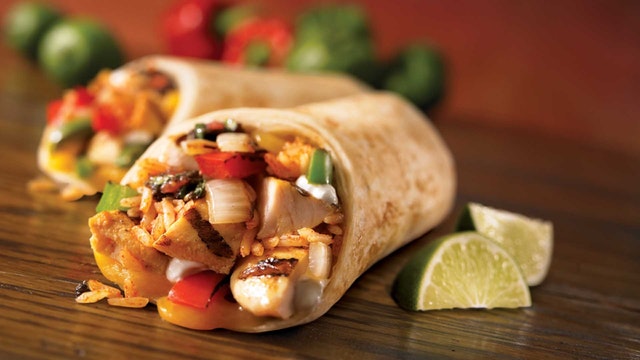
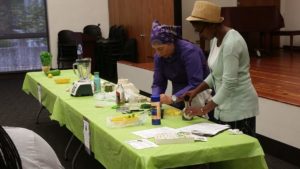 Sustainable Solano offers healthy cooking workshops around the county that share ways to cook with fresh, seasonal produce.
Sustainable Solano offers healthy cooking workshops around the county that share ways to cook with fresh, seasonal produce.